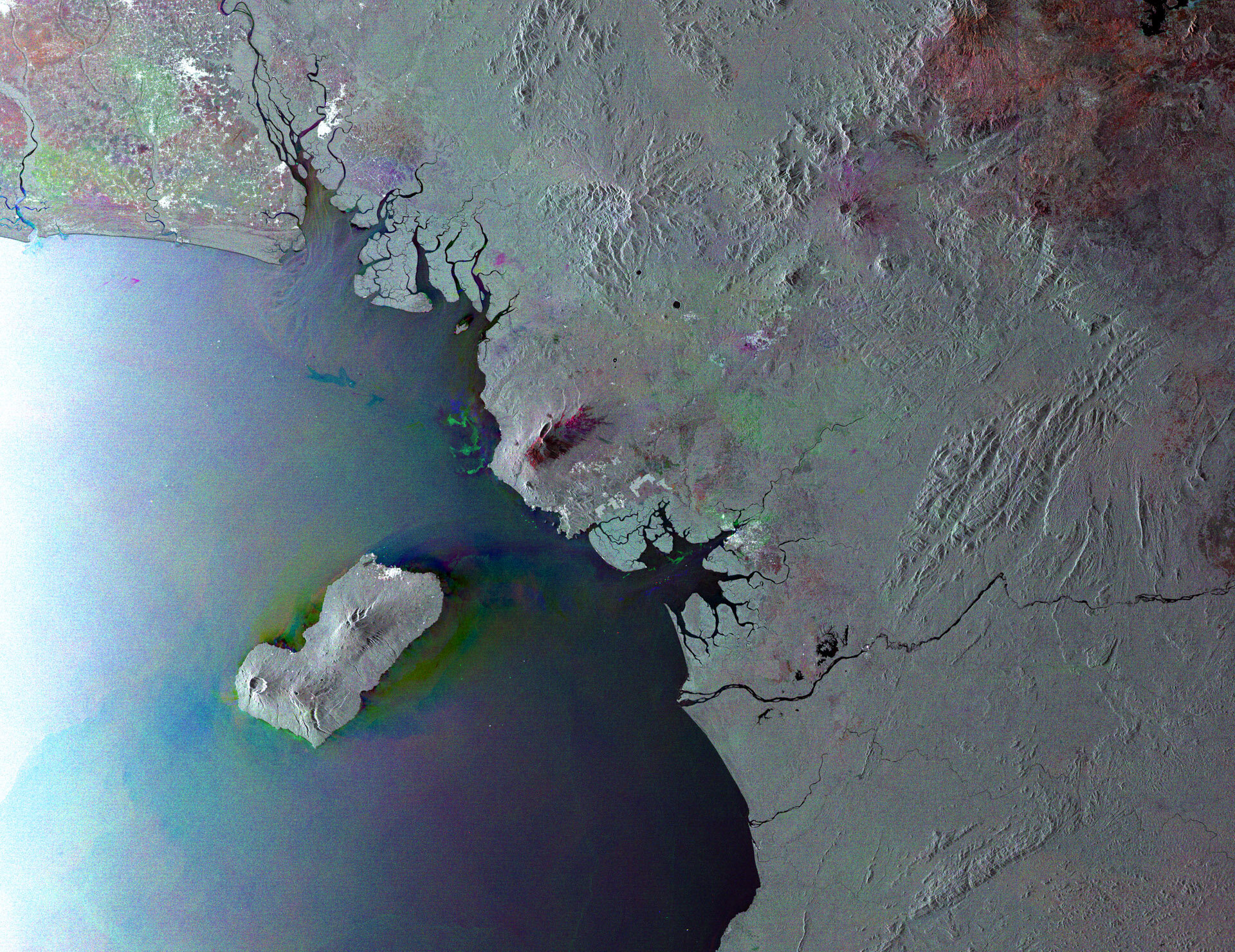Earth from Space: Gulf of Guinea
This Envisat image shows West Africa around the Gulf of Guinea, with parts of Nigeria to the north and Cameroon to the east visible.
Cameroon’s largest city of Douala is located near the Wouri estuary near the centre of the image. This tidal estuary contains extensive mangrove forests, but its ecology is under threat from industrial, farming and household pollution.
Over 90% of Cameroon's industries are based in or around Douala, and liquid waste is often released into the waters with little or no treatment.
North of the Wouri estuary, the Mount Cameroon volcano is clearly visible. Rising over 4000 m from the coast through a tropical rainforest, it is one of Africa’s tallest mountains.
Mount Cameroon is part of a chain of volcanoes known as the Cameroon Volcanic Line. The island of Bioko – pictured here just off the coast – is also part of the line. Home to three volcanoes, Bioko used to be attached to the mainland in what is now Cameroon, but was cut off when sea levels rose at the end of the last ice age.
The volcanic line also continues inland with the Bamboutos Mountains, a group of volcanoes in Cameroon’s Western High Plateau.
Reflections of Envisat’s radar signal appear like specks of white throughout the image. They are particularly concentrated around cities such as Malabo on the island, Douala near the Wouri estuary and the populated areas of southern Nigeria. These white specks are the typical appearance of built-up areas in radar images, owing to the multiple reflection of the radar beam by buildings and especially metal constructions.
This image is a compilation of three images from Envisat’s radar, acquired on 6 February, 7 March and 6 April 2012 – just two days before communication with the satellite was lost.
Ten years of archived data from Envisat’s radar and other instruments are still being exploited by scientists for a variety of applications.
The Image of the Week is featured on ESA Web-TV, broadcast online every Friday at 10:00 CEST.







